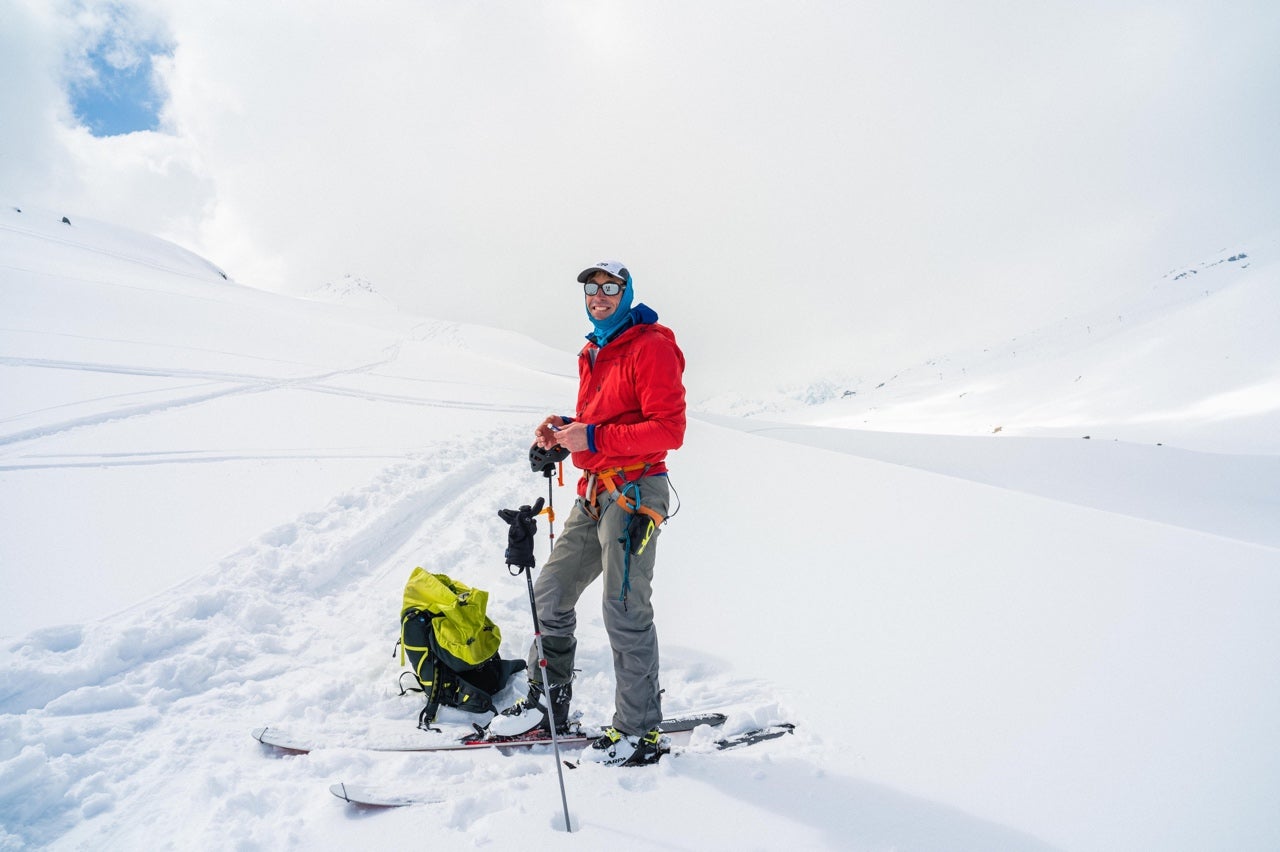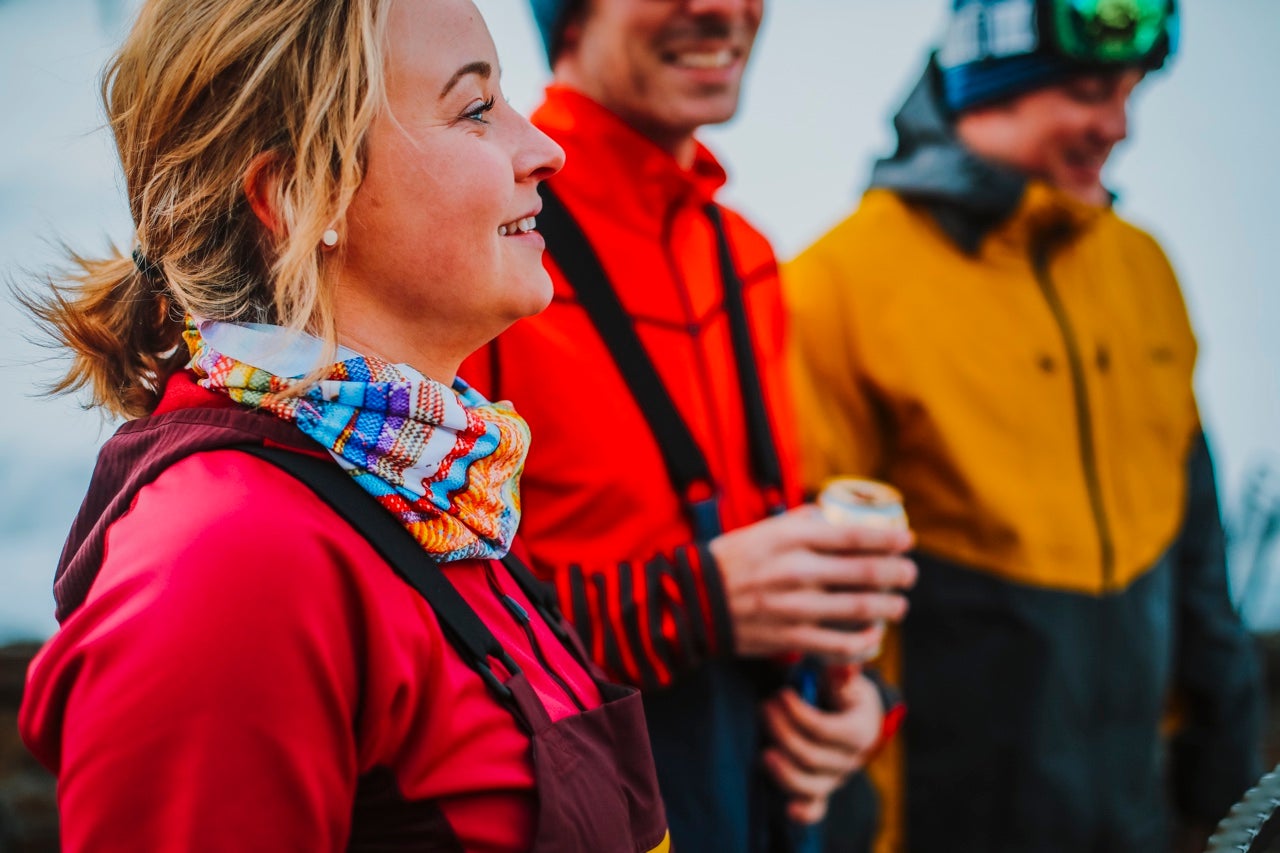Here, we chatted with Neil and outerwear product manager Alex Lauver to find out the best layering system for a day in the backcountry.

Your shell is only as flexible as the layer underneath.
You don’t want midlayers to bind underneath your shell, Alex says. Movement-mirroring stretch, in layers like the Enigma base layers, perfect for making sure you can reach and flex when you need to. They're also breathable and quick to dry—which is key when you're earning your turns.
Backcountry ski pants should be extra durable, water-resistant and a bit stretchy.
Like the Women's Cirque II Pants or Men's Cirque II Pants. "You never know what conditions you’ll encounter at different elevations," Alex says. "Here in the PNW, you could be hiking through rain down low, breaking crusty trail mid mountain and have really cold windy ridges. Your pants have to keep up! Stretch is key as well."
Pack plenty of layers.
In his experience, Alex says, the average person underestimates the number of layers they’ll want to react to changing conditions. "A base and warm jacket are NOT enough!" he says. When you’re layering, aim for a base layer, like the Enigma line, a midlayer, like the Vigor line—or even down, like the Illuminate line and then your waterproof shell on top.
Neil opts for the lighter weight Echo Tee on top with Enigma Bottoms becuase he runs hot while hiking, and adds a wind-blocking Ferrosi Hooded Jacket to the mix underneath his shell. "I always carry a puffy coat, too, in my backpack and sometimes an extra insulated layer on cold days," he says. "With this setup I’ve found that I can stay comfortable no matter what the weather conditions or physical output may dictate."

But start cold.
"When I first began venturing into the backcountry to seek out powder, it took me a while to figure out how to stay comfortable," Neil says. "When you're hiking for your turns, things can heat up a lot quicker than on a cold chair lift ride. I would typically wear clothes that were way to warm for the type of aerobic output those activities require, overheating on the way up and and zapping my energy."
“If it’s wet and you need that hard shell, don’t forget that even the most breathable shell will have a backlog of moisture,” Alex says. “You should almost be a little chilly when you start, as things will warm up with movement. You don’t want to get soaked from the inside out.” Our lightest base layer, perfect for layering under anything else without overheating is the Echo Collection.

The better your base layer, the less your hard shell has to do.
“Don’t take too big or heavy a shell if you don’t have to,” Alex says. “In many cases, if you’re moving fast and it’s not crazy humid in just a little mist or drizzle, you may be okay without a shell. Your body heat can keep inner layers pretty dry, and a good insulation layer with a nice face with DWR can repel more precipitation than you’d think.” That way, you can wait until a real downpour to add a hard shell on top, like the award-winning Interstellar Jacket.
Don't forget your head and digits.
A kick-ass shell goes a long way, but if your fingers, toes or ears are frozen, it's tough to keep morale high. Alex stashes an extra hat, pair of gloves and socks in his pack. "Those can make a HUGE difference when you’re cold," he says. "I always keep a pair of mitts that seem too warm for the conditions in my pack."
***
Photos by Elise Giordano, Ember Photo, Joey Schusler and Bernd Zeugswetter.
